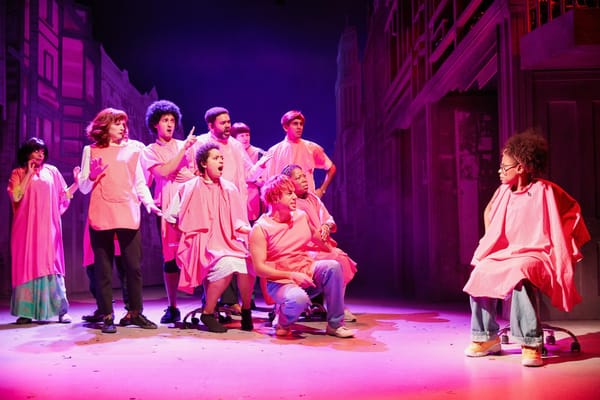Gang signs and a Prayer
Erica Whyman updates Romeo and Juliet for the modern age.

In their tracksuit hoodies and their Adidas creps, their mesh crop tops and skinny black jeans, their baseball caps and performative, cocksure swagger, the teenagers of Erica Whyman’s Verona would not look out place in a Stormzy video. In the new RSC production of Romeo and Juliet, Shakespeare’s Italian city has been built in modern day London’s image. We don’t have to suspend our disbelief too much; this story of streets where a misjudged remark is answered by a flash of a knife is sadly not all that unfamiliar.
It’s not just the wardrobe that Whyman has updated, but the narrative too. The programme calls it “queering the pitch”; in practice, genders are a bit more fluid, queer themes a little more explicit . Benvolio’s love for Romeo is more overtly romantic than historical adaptations suggest, though even here it is painfully silent, burdened by layers of repression and heteronormativity. Charlotte Josephine plays Mercutio as a glittering loud-mouthed seventeen-year old girl constantly spoiling for a fight. Josephine is luminous in the role, filling the stage with tremendous energy and appropriately mercurial physicality. In first couple of acts she is larger than life, brimming with bravado which quickly collapses in her dying moments. Josephine with poignancy shows Mercutio for who she really is – angry yes, but also impossibly young and scared.
The great strength of Whyman’s adaptation is its ability to strip back the trappings of the Elizabethan English to reveal its principal characters as the children they are, only just blossoming into adulthood. Here, Romeo and Juliet, Benvolio and Mercutio, are kids full of their own importance, kids sure of their immortality, kids forced to grow up too fast in brutal, violent ways.
Senseless rage and pointless acts of retribution, not star-crossed love are at the heart of this production. The menacing glint of sharp blades is ever-present. The stage has been constructed by designer Tom Piper as a brutalist concrete mausoleum, cold and vast. In the world of these teenagers, the pretty things – the strings of twinkling lights that descend in place of stars during the balcony scenes, or the huge lush wall of ferns that acts as a backdrop for the Friar’s home – are fragile, acutely transient.
The smash bang of the electronica-inspired score punctuates this punchy adaptation, but for all its modern flourishes, the adaptation is still classically good. The passages that will for many in the audience be familiar, never feel trite. The hugely charismatic Barry Gill is excellent as Romeo, capturing both a rogueish impulsivity and flashes of loving sensitivity in his performance. Karen Fishwick as Juliet is equally good. The young actors are ably supported by a talented roster of castmates playing the older roles, with Ishia Bennison as Nurse and Andrew French as the Friar standing out as scene-stealing performers.
There is diversity of gender, skin-tone, experience and accent in the big speaking roles and while this is commendable, what is even better is that none of this is superfluous. Whyman’s production without pretension or fanfare illuminates this play of passion and violence for our age. The result is a wonderful production but one that is rather more classical than it would first appear.
-4 stars







